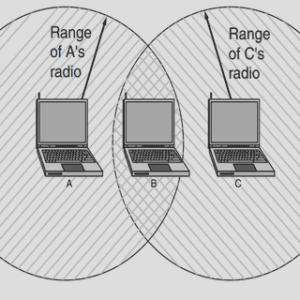(Downloads - 0)
For more info about our services contact : help@bestpfe.com
Table of contents
Abstract
1 Introduction
1.1 Pseudorandom Functions
1.1.1 From One-Way Functions to Pseudorandom Functions
1.1.2 Number-Theoretic Constructions
1.1.3 Extensions of Pseudorandom Functions
1.2 Our Contributions
1.2.1 Extension and Correction of the Bellare-Cash Framework
1.2.2 Algebraic Framework for Pseudorandom Functions
1.2.3 Assumptions
1.2.4 Related-Key Secure Pseudorandom Function for XOR Relations
1.3 Other Contributions
1.3.1 Order-Revealing Encryption
1.3.2 Private Circuits
1.3.3 Functional Encryption and Obfuscation
1.4 Organization
2 Preliminaries
2.1 Notation and Preliminaries
2.1.1 Mathematical Notions
2.1.2 Algorithmic Concepts
2.1.3 Provable Security
2.2 Classical Computational Assumptions
2.2.1 The Discrete Logarithm Problem
2.2.2 Classical Discrete-Logarithm-Based Assumptions
2.2.3 Building DDH-Hard Groups
2.3 Cryptographic Primitives
2.3.1 Collision-Resistant Hash Functions
2.3.2 Pseudorandom Functions
2.3.3 Aggregate Pseudorandom Functions
2.3.4 Multilinear Pseudorandom Functions
2.4 Multilinear Maps and the Generic Multilinear Map Model
2.4.1 Multilinear Maps
2.4.2 Generic Multilinear Map Model
3 Introduction to Related-Key Security
3.1 Definition and Security Model
3.2 First Impossibility and Feasibility Results
3.2.1 Impossibility Results
3.2.2 Feasibility Results
3.3 The Central Role of Pseudorandom Functions
3.4 The Bellare-Cash Framework, Revisited
3.4.1 Additional Notions
3.4.2 Dealing with Key-Collisions
3.4.3 The (Extended) Framework
3.5 Application: Related-Key Security for Affine Relations
3.5.1 Ingredients
3.5.2 Putting Everything Together
3.6 Further Generalization of the Bellare-Cash Framework
3.6.1 Relaxing the Requirements of the Framework
3.6.2 From Malleability to Unique-Input-Related-Key Security
3.7 Application: Related-Key Security for Affine Relations
4 A New Family of Assumptions
4.1 The Matrix-Decisional-Diffie-Hellman Assumptions
4.2 A New Family of Matrix-Diffie-Hellman Assumptions
4.3 Connexion with Standard Assumptions
4.3.1 Summary of Relations
4.3.2 Relation with the DDHI Assumption
4.4 Security in the Generic Multilinear Group Model
4.4.1 Definitions: Monomial Order and Leading Commutative Monomials
4.4.2 Main Lemma
4.4.3 Putting Everything Together
5 An Algebraic Framework for Pseudorandomness
5.1 Intuition and Subtleties
5.1.1 Intuition
5.1.2 Procedure for Testing Linear Dependence
5.1.3 Extension to Weaker Assumptions
5.1.4 On the Representation of Multivariate Polynomials
5.2 Formal Security Notion and Main Result
5.2.1 Formal Definition of the Polynomial Linear Pseudorandomness Security
5.2.2 The PLP Theorem
5.2.3 Immediate Corollary: the LIP Theorem
5.3 Proof of Theorem 5.2.2
5.3.1 Decomposition Lemmata
5.3.2 The Main Proof
6 Applications
6.1 Applications to Standard Pseudorandom Functions
6.1.1 Extended Number-Theoretic Pseudorandom Functions
6.1.2 Simple Proofs of Security
6.2 Applications to Related-Key Security
6.2.1 Direct Constructions
6.2.2 Constructions From Unique-Input-Related-Key Security, Algebraically
6.2.3 Other Applications to Related-Key Security
6.2.4 Extension to Weaker Assumptions
6.2.5 A Further Generalization of the Framework
6.3 Applications to Aggregate Pseudorandom Functions
6.3.1 Read-Once Formula Aggregation
6.3.2 Impossibility Results
6.3.3 Extension to Weaker Assumptions
6.4 Applications to Multilinear Pseudorandom Functions
6.4.1 Cohen-Holmgren Construction
6.4.2 Symmetric Multilinear Pseudorandom Functions
6.4.3 Skew-Symmetric Multilinear Pseudorandom Function
6.4.4 Extension to Weaker Assumptions
7 A Provably-Secure Pseudorandom Function For XOR-Relations
7.1 Additional Material
7.1.1 Related-Key Security for XOR Relations
7.1.2 Multilinear Maps
7.1.3 Straddling Sets
7.2 Our Construction
7.2.1 Intuition
7.2.2 Actual Construction
7.3 Security in the Generic Multilinear Map Model
7.4 Security under Non-Interactive Assumptions
7.4.1 Two Non-Interactive Assumptions
7.4.2 Security of our Construction
7.5 Security of the XY-DDH Assumption in the Generic Multilinear Map Model
7.6 Security of the Sel-Prod Assumption in the Generic Multilinear Map Model
7.6.1 Proof Ingredient: Index Sets and Profiles
7.6.2 Security of the Sel-Prod Assumption
8 Conclusion and Open Questions
8.1 Conclusion
8.2 Open Questions
Notation
Abbreviations
List of Illustrations
Figures
Tables
Bibliography


